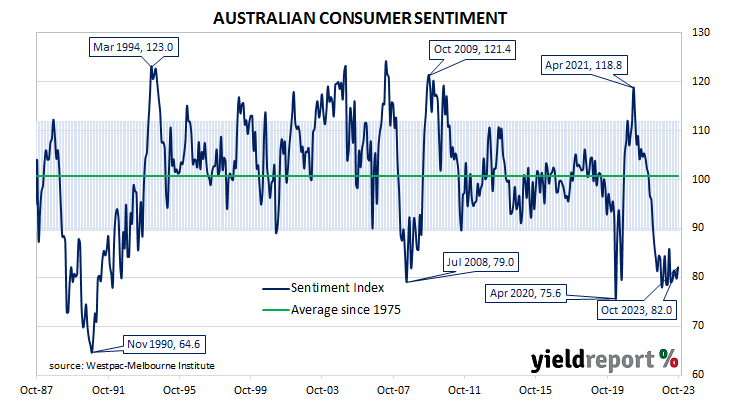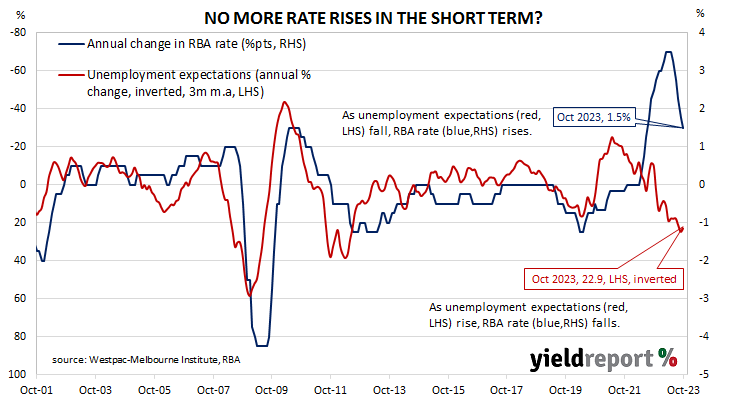Summary: Household sentiment improves; optimism in “extremely short supply”; ACGB yields lower; rate-rise expectations soften; four of five sub-indices higher; fewer respondents expecting higher jobless rate.
After a lengthy divergence between measures of consumer sentiment and business confidence in Australia which began in 2014, confidence readings of the two sectors converged again in mid-July 2018. Both measures then deteriorated gradually in trend terms, with consumer confidence leading the way. Household sentiment fell off a cliff in April 2020 but, after a few months of to-ing and fro-ing, it then staged a full recovery. However, consumer sentiment has deteriorated significantly over the past two years, while business sentiment has been more robust.
According to the latest Westpac-Melbourne Institute survey conducted in the first week of October, household sentiment has improved, albeit to a still pessimistic level. Their Consumer Sentiment Index rose from September’s reading of 79.7 to 82.0, a reading which is still well below the “normal” range and significantly lower than the long-term average reading of just over 101.
“The consumer mood has improved slightly but optimism remains in extremely short supply,” said Westpac Chief Economist Bill Evans. “At 82, the latest Index read is still in deeply pessimistic territory, consistent with a continuation of the contraction in per capita spending seen since late last year.”
Any reading of the Consumer Sentiment Index below 100 indicates the number of consumers who are pessimistic is greater than the number of consumers who are optimistic.
The report was released on the same day as the latest NAB Business Survey and Commonwealth Government bond yields moved lower on the day. By the close of business, the 3-year ACGB yield had lost 3bps to 3.93%, the 10-year yield had shed 7bps to 4.47% while the 20-year yield finished 5bps lower at 4.82%.
In the cash futures market, expectations regarding further rate rises softened. At the end of the day, contracts implied the cash rate would increase from the current rate of 4.07% and average 4.105% through November, 4.13% in December and 4.175% in February. May 2024 contracts implied a 4.185% average cash rate while August 2024 contracts implied 4.135%, 7bps more than the current rate.
Four of the five sub-indices registered higher readings, with the “Time to buy a major household item” sub-index posting the largest monthly percentage gain.
The Unemployment Expectations index, formerly a useful guide to RBA rate changes, dropped back from 130.8 to 127.3. Lower readings result from fewer respondents expecting a higher unemployment rate in the year ahead.



